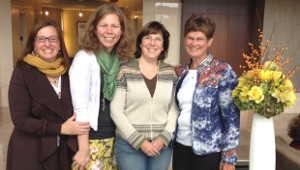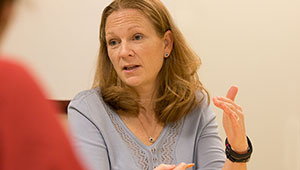Which women are receiving MRI to screen for breast cancer?

An epidemiologist identifies who is appropriately undergoing this imaging for breast cancer and who is not.
By Karen Wernli, PhD, an epidemiologist who is an associate investigator at Kaiser Permanente Washington Health Research Institute
Coinciding with the start of Breast Cancer Awareness Month, I published a paper in Cancer about U.S. women’s use of MRI to screen for breast cancer. I’ve been studying how we use breast MRI in the United States for a decade, as this technology has emerged as clinical screening tool from the diagnostic imaging. As the use of breast MRI has increased over the past 20 years, it is important to know who is receiving it, why they are receiving it, and whether or not health services are aligned with national clinical guidelines.
Our results from analyzing data over a 10-year span (2006-16) indicate that this technology is now being used more commonly among women who are recommended to receive it, though there remains room for improvement. The Cancer article, which I wrote with colleagues from leading medical schools, documents this shift and spotlights where clinical care teams can be doing better in referrals for breast MRI. It is one of the first studies to evaluate breast MRI trends from a broad national sample by subgroups of those recommended (women with known BRCA) and non-recommended groups (women with family history alone and women with prior breast cancer). Our paper presents 3 main findings.
First, the overall rate of use of breast MRI is low in a national population, which makes sense because most women will not routinely need this imaging test. Appropriately, women with known BRCA, a genetic condition that significantly increases cancer risk, have the highest rates overall of breast MRI, and the rates have increased on average by 21% per year. Women with known BRCA are recommended to screen for breast cancer with both mammography and breast MRI, according to national clinical guidelines.
Second, the overall rate of use of breast MRI was highest among women with known BRCA age 50-64, but lower in women in their 30s and 40s. This represents a clear opportunity to improve surveillance. These younger women could benefit from use of breast MRI. Breast cancer incidence in women with known BRCA rapidly increases during their 30s and 40s before rates stabilize when women are in their 50s. Younger women with known BRCA also face the conflict of starting or adding to their families versus clinical recommendations to undergo prophylactic surgery to mitigate their cancer risk. Screening younger women with mammography and breast MRI could delay these decisions.
Finally, despite low overall rates and improving breast MRI rates in women who meet the recommended guidelines, still nearly 4 out of 5 breast MRIs are performed in women who are not currently recommended—women with a family history of breast cancer alone and women with a personal history of breast cancer. These findings confirmed previous findings in the Breast Cancer Surveillance Consortium that a large proportion of women with a family history alone are more likely to get breast MRI, even if their personal risk of cancer is low. Furthermore, though not observed in our study time period, the American College of Radiology has recommended breast MRI for women with prior breast cancer if they have dense breasts or were diagnosed before age 50. My own research has shown that breast MRI might not have improved accuracy over mammography in this population.
Taken together, the findings suggest that there is tremendous potential improved alignment of the use of breast MRI in guideline-recommended populations. There is a well-identified opportunity to support women who are not being offered breast MRI but would benefit, particularly by targeting younger women with known BRCA. One way to achieve that goal is electronic health record support in the identification of women eligible to prompt conversations with their clinicians.
Breast Cancer Awareness Month is a time to honor how much we have learned about breast cancer and the progress we have made. It also gives us the chance to set new goals and take steps to move toward them. I am pleased that our paper can contribute to these efforts.
researcher profile

What drives Karen Wernli to study breast cancer?
This Breast Cancer Awareness Month, Dr. Karen Wernli reflects on her cancer research, centered on patients and access.
cancer research

Using breast MRI after cancer may lead to unneeded biopsies
A Kaiser Permanente-led BCSC study is among the largest ever to evaluate adding MRI surveillance for breast cancer survivors.
research

What to expect after a screening breast MRI vs. mammography alone
Diana Buist and BCSC find screening MRI leads to more biopsies, finding fewer cancers, regardless of personal history of breast cancer: JAMA Internal Medicine.


